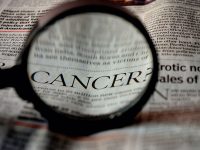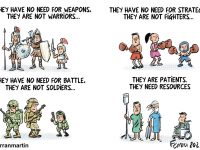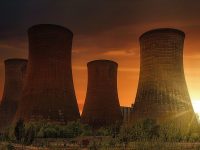Exploring radiation measurement after Fukushima
When media ecology meets citizen science
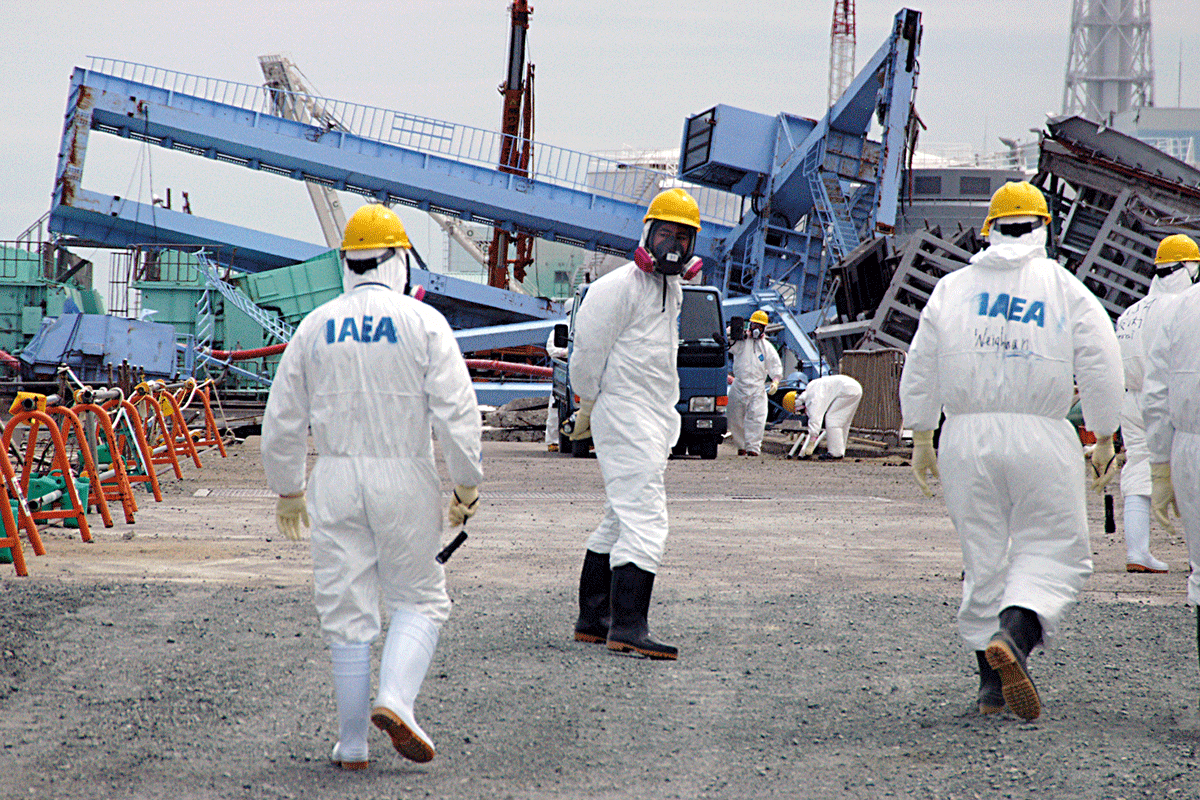
While various scholars have investigated the role of citizens in generating scientific data after the Fukushima Daiichi nuclear disaster under the labels of citizen science and citizen sensing, this essay draws on media ecology and explores its potential theoretical usefulness for enhancing our understanding of post-Fukushima citizen science practices. Taking Marshall McLuhan’s perspective of technology as a medium, this article creates a theoretical framework for foregrounding the role of a measurement device (of radiation levels, in this case) in extending its user’s body and mind. In doing so, this essay attempts to contribute to the fields of media studies and Science, Technology, and Society (STS).
Keywords: citizen science, media ecology, Marshall McLuhan, Fukushima, radiation-measuring.
On March 11th, 2011, a devastating earthquake and the resulting tsunami hit the northeastern region in Japan. The Fukushima Daiichi nuclear power plant melted down, releasing a tremendous amount of radioactive materials into the air. Like many other contemporary risks, radioactive contaminations are essentially imperceptible to the five senses, and as such, they must be mediated using technology (Beck, 1992). While the Japanese state struggled to use an existing institutional set of radiation-monitoring posts in the aftermath of the disaster, citizens tactically used various measurement devices to make sense of their surroundings in the form of data.
Using a variety of approaches, scholars in the field of Science, Technology, and Society (STS) in particular have focused on examining the role of citizens in generating alternative scientific data, information, or knowledge under the label of citizen science (Abe, 2015; Berti-Suman, 2020; Kuchinskaya, 2019; Sternsdorff-Cisterna, 2019). These studies documented the different scientific practices by which various individuals and organizations addressed the Fukushima disaster (Kenens et al., 2020). While much research on citizen science has focused on its data production and citizen sensing practices (Gabrys, 2019; Goodchild, 2007), this essay seeks to contribute to the literature by probing the role of the measurement device as a medium through the lens of Marshall McLuhan (1911–1980) in media ecology.
«In the immediate aftermath of the 2011 earthquake and tsunami, many radiation measurement instruments emerged in Japan»
As an established field of media studies (Scolari, 2012; Strate, 2004), media ecology has been primarily concerned with how «media of communication affect human perception, understanding, feeling, and value; and how our interaction with media facilitates or impedes our chances of survival. The word ecology implies the study of environments: their structure, content, and impact on people» (Postman, 1970, p. 161). Media ecology thus takes the effects of media on human perceptions as an object of study. Among many others, McLuhan has come to be understood as one of the key foundational theorists in media ecology (Strate, 2004; 2008). His view of medium (and media ecology) is essentially controversial, but still influential among certain scholars of various academic disciplines (Strate & Wachtel, 2005). In Understanding media: The extensions of man, McLuhan (1964) examined speech, written words, clothing, clocks, press, television, and weapons as media, and conceptualized each technology as synonymous with a medium, focusing on how each medium extends our human body and mind by creating a unique, but invisible environment that facilitates the development of a particular way of perceiving the world. As such, McLuhan reinvented media as a «part of our environment, often fading into the background, becoming for all intents and purposes invisible, yet influencing and shaping us in highly significant ways» (Strate & Wachtel, 2005, p. 3). In his co-authored book The medium is the massage, McLuhan and Fiore (1967) noted:
All media work us over completely. They are so pervasive in their personal, political, economic, aesthetic, psychological, moral, ethical, and social consequences that they leave no part of us untouched, unaffected, unaltered. The medium is the massage. Any understanding of social and cultural change is impossible without a knowledge of the way media work as environments. All media are extensions of some human faculty—psychic or physical. (McLuhan & Fiore, 1967, p. 26)
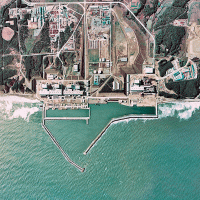
After the earthquake and tsunami, the Fukushima Daiichi nuclear power plant melted down, releasing a tremendous amount of radioactive materials into the atmosphere. On the photograph, Fukushima reactors before the accident. / Photo: National Land Image Information, Ministry of Land, Infrastructure, Transport and Tourism
As such, McLuhan’s study of media ecology focuses on making the invisible environments visible rather than discussing media contents. Apparently, his view of media is problematic because its assumption is based on the fallacy of technological determinism, as many scholars have pointed out (Williams, 2003). As such, taking McLuhan’s approach may lead us to decouple a sensor technology from a citizen sensing practice, which necessarily involves both nonhuman and human agencies in complicated ways, and to primarily consider the role of the sensor technology in determining the citizen sensing practice. No doubt, the scale and scope of citizen science practices cannot be directly determined by their technologies alone, but imagine citizen science without a scientific instrument; in many projects, people would not be able to collect the required data without using a technology. Among the different approaches of multiple media ecology theorists (Strate, 2004), McLuhan’s deterministic view can be a useful resource for considering the potential role of the devices in shaping citizen science practices after Fukushima.
Despite the essential limitations of media ecology, this study foregrounds the effects of radiation measurement device per se and thus sheds light upon the conventional and more or less human-centered understanding of citizen science after Fukushima. Like much research on media ecology, this essay is not based on empirical research; rather, it deliberately brings in media ecology and explores its potential theoretical usefulness for enhancing our understanding of citizen science after the Fukushima disaster.
Radiation measurements after Fukushima
In the immediate aftermath of the earthquake and tsunami, many radiation measurement instruments emerged in Japan. Initially, the Japanese state struggled to provide information on radioactive materials by referring to its institutional measurement devices (monitoring posts), partly because some of them were broken down due to the disaster, but multiple and different devices gradually became available with the help of digital media. However, among different measurement instruments available, there was one specific measurement device that many citizen science practitioners initially paid attention to: Geiger-Müller counter (Geiger counter, hereafter). The Geiger counter was relatively more affordable than others, thus becoming widely available for many people.
This essay probes into how the Geiger counter as a medium affects the perceptions and values of its users. In general, a Geiger counter is understood as a medium designed to count the number of ionizing radiation, representing imperceptible radioactive materials as a particular unit (for example, count per minute, cpm). Most significantly, however, the Geiger counter is not technically designed to accurately measure radiation levels in the environment; indeed, this technology is designed to detect radioactive contamination within a laboratory, not in the environment (Maruko, 2012). Thus, the Geiger counter as a medium does not accurately convey anything about the actual health effects of imperceptible radioactive materials.
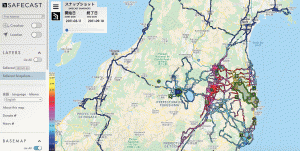
Safecast, a global network of grassroots measurement practitioners, built its own Geiger counter named bGeigie and collected a tremendous amount of data on radiation levels in the air, displaying the collected data in a map form available on their website. / Photo: Nokton–Safecast
From McLuhan’s perspective, the Geiger counter can be redefined as a medium that functions as an invisible environment shaping its users’ body and mind. Specifically, the device can involve the extension of the eye and the ear, allowing its users to «see» and «hear» levels of radiation in the form of cpm. This is a personal consequence of the device as a medium which involves the extension of their vision and hearing. Furthermore, the Geiger counter can be also seen as a medium that involves extending its user’s mind by encouraging her to interact with ionizing radiation in a certain form and discouraging her from doing so in other forms. In particular, a Geiger counter can be seen as a medium that encourages its user to embrace «just good enough data» (Gabrys, Pritchard, & Barrat, 2016, p. 2), discouraging her from clinging to institutional devices.
As noted, the Fukushima disaster precipitated the emergence of a wide range of Geiger counters, including shoddy ones, making Geiger counters the dominant mode of communication in terms of quantity, but not quality. In fact, a book titled The latest guidebook on Geiger counters (Nihon Hōshasen Kanshitai, 2011) introduced and reviewed as many as 35 different types of Geiger counters, such as Air Counter (Japan), DoseRAE2 (United States), SOEKS-01M (Russia), PM1208M (Belarus), and BS2000 (China), among others. From McLuhan’s perspective, each Geiger counter worked as a particular environment that altered the senses of its users in a particular way; meanwhile, the Japanese state gradually reconstructed its information infrastructure for measuring radiation and used its institutionalized measurement instrument, designed to accurately measure low-dose radiation levels, allowing its users to better understand the actual health effects of ionizing radiation.
«The Japanese state issued an announcement, warning that shoddy measurement instruments were being used in post-Fukushima Japan, contributing to policing devices and turning the spotlight upon them»
It is important to note that it was not the first time in Japanese society that different sensing practices emerged after the Fukushima disaster. Indeed, a wide variety of citizens built their own Geiger counter, named as R-DAN (RaDiation Alert Network), and collectively engaged with sensing practice after the Chernobyl nuclear disaster (Abe, 2020). Perhaps more strikingly, the grassroots network sustained its monitorial practice over more than 30 years by using the device. However, what was distinct about measuring radiation after Fukushima is the role of the digital media; Geiger counter users formed grassroots online databases of information on radiation levels (Abe, 2015; Wynn, 2017). For instance, Safecast, a global network of grassroots measurement practitioners, built its own Geiger counter named bGeigie and collected a tremendous amount of data on radiation levels in the air, displaying the collected data in a map form. Likewise, Hakatte Geiger or “Will you measure [nuclear radiation] by using a Geiger counter” provided a participatory online database where Geiger counter users contributed their measurement data (Abe, 2015). Hakatte Geiger successfully used Twitter as a resource for its data quality control and allowed Twitter users to be moderators of data provided through all kinds of Geiger counters. With the digital media, the Geiger counter effectively worked as an alternative environment to the Japanese’s state institutional device. As McLuhan and Fiore noted:
Environments are not passive wrappings, but are, rather, active processes which are invisible. The groundrules, pervasive structure, and over-all patterns of environments elude easy perception. Anti-environmentalists, or countersituations made by artists, provide means of direct attention and enable us to see and understand more clearly. The interplay between the old and the new environments creates many problems and confusions. The main obstacle to a clear understanding of the effects of the new media is our deeply embedded habit of regarding all phenomena from a fixed point of view. (McLuhan & Fiore, 1967, p. 68)
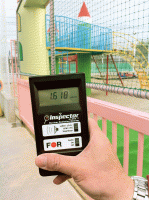
Photo: Safecast web
As such, post-Fukushima citizen science practitioners can be compared to what they call «anti-environmentalists», precisely because a wide range of Geiger counter users allowed us to «see and understand» an older environment made by the Japanese state’s institutional device that mostly determined our senses in an imperceptible way before the disaster.
Just as McLuhan and Fiore predicted, the new environment caused controversy over measurement instruments (Abe, 2015). In September 2011, for example, the Japanese state issued an announcement, warning that shoddy measurement instruments were being used in post-Fukushima Japan. In doing so, the state contributed to policing devices and turning the spotlight upon them more than their contents. To borrow from McLuhan’s famous phrase, the medium officially became the message: the same readings would yield a different meaning if the measurement reading is rendered by «good» or «bad» devices. While the Japanese state’s measurement instrument originally constituted an invisible environment before the disaster, a wide variety of citizens using their individual devices provided «means of direct attention to» the old environment. Multiple and different devices including the Geiger counter then gradually became environmental (and therefore invisible) when compared to its contents (measurement readings in the cpm form). Many people desperately sought data by using whatever they had, out of which the state’s institutional device re-emerged as a «good» device. In short, these multiplicity of devices became the media, transforming the meaning of the state’s instrument as a «good» device (their content).
Whereas radiation levels have been declined for the past ten years, the Fukushima disaster has yet to end. Rather than focusing exclusively on radiation levels, it is nevertheless important to pay attention to the device because it may involve the extension of our body and mind, and because it may allow us to think reflexively about our view of the changing relations between the medium and its contents after Fukushima. In doing so, McLuhan’s view of media ecology contributes to entertaining the notion of a medium-centered understanding of citizen science after Fukushima.
Conclusions
Naturally, McLuhan’s perspective does not provide a complete picture of citizen science after Fukushima. Just as many communication scholars rightly point out, his view of a medium is based on the technological determinism, paying inadequate attention to both the political economy of media and the role played by media users (Carey, 2008). Differently put, McLuhan’s ideas, including his view of a medium, are more or less speculative, possibly alienating most STS scholars. Nevertheless, his perspective can contribute to our alternative understanding of not so often evident aspects of citizen science practices. Placing McLuhan’s media ecology at the center of citizen science provided at least two major implications.
First, this essay foregrounds the role of a measurement device in working as an environment that encourages its users to develop their perceptions of the danger of radiation in a specific way, while discouraging alternative perceptions. While data on radiation levels as content tend to monopolize our attention, I highlight that the device as a medium functions as an environment that organizes our senses. As such, this essay suggests that McLuhan’s perspective paves a way for medium-centered studies of citizen science after Fukushima. If this idea is right, his view of media ecology would also allow citizen science practitioners to think reflexively about the extent to which their device may have involved the extension of their bodies and minds for the past ten years. Using the device, they may be simultaneously used by it; in other words, their senses may have been expanded by their device for the past years, which suggests that it is important for citizen sensing practitioners to enhance critical awareness of their device.
Second, this essay also offers an insight to the study of citizen science after Fukushima in relation to the in/visibility of the devices. McLuhan’s perspective allows us to consider how Japanese state’s institutional device (and other multiple devices) becomes visible or invisible in relation to its contents. Focusing on making the invisible environment made by the devices visible also allows us to think reflexively about the role of media ecology in shaping the terms for citizen sensing practices after Fukushima. Linking media ecology to citizen science may thus raise critical questions; how can we become so oblivious of the devices just ten years after the disaster? What are the terms for citizen science practitioners to develop their communication strategy through the use of their devices and their contents for years to come?
Building an adequate model of citizen sensing practices from McLuhan’s perspective will not be an easy matter, but this essay at least indicates that it will allow us to entertain the notion of his media ecology not just in relation to post-Fukushima citizen science but beyond.
References
Abe, Y. (2015). Measuring for what: Networked citizen science movements after the Fukushima nuclear accident. [Doctoral dissertation, University of Southern California]. USC Digital Library. http://digitallibrary.usc.edu/cdm/ref/ collection/p15799coll3/id/620280
Abe, Y. (2020). Citizen before science: R-DAN and its monitorial ethic after Chernobyl. In M. Fathisalout-Bollon, & A. Berti-Suman (Eds.), Legal, so- cial and ethical perspectives on health & technology (pp. 65–90). Sovoie Mont Blanc University Press.
Beck, U. (1992). Risk society: Towards a new modernity. Sage.
Berti-Suman, A. (2020). Sensing the risk: In search of the factors influencing the policy uptake of citizen sensing. Tilburg Law School.
Carey, J. W. (2008). Communication as culture. Routledge.
Gabrys, J. (2019). Sensors and sensing practices: Reworking experience across entities, environments, and technologies. Science, Technology, & Human Values, 44(5), 723–736. https://doi.org/10.1177/0162243919860211
Gabrys, J., Pritchard, H., & Barratt, B. (2016). Just good enough data: Figuring data citizenships through air pollution sensing and data stories. Big Data & Society, 3(2), 1–14. https://doi.org/10.1177/2053951716679677
Goodchild, M. F. (2007). Citizens as sensors: The world of volunteered geography. GeoJournal, 69(4), 211–221. https://doi.org/10.1007/s10708- 007-9111-y
Kenens, J., Van Oudheusden, M., Yoshizawa, G., & Van Hoyweghen, I. (2020). Science by, with and for citizens: Rethinking ‘citizen science’ after the 2011 Fukushima disaster. Palgrave Communications, 6, 58. https://doi. org/10.1057/s41599-020-0434-3
Kuchinskaya, O. (2019). Citizen science and the politics of environmental data. Science, Technology, & Human Values, 44(5), 871–880. https://doi. org/10.1177/0162243919858669
Maruko, K. (2012). Hōshasen sokutei no uso [Lies in radiation measurement]. Mynavi.
McLuhan, M. (1964). Understanding media: The extensions of man. Routledge.
McLuhan, M., & Fiore, Q. (1967). The medium is the massage. Penguin Books.
Nihon Hōshasen Kanshitai. (2011). Gaigā kauntā saishin gaido [The latest guidebook on Geiger counters]. Softbank Creative.
Postman, N. (1970). The reformed English curriculum. In A. C. Eurich (Ed.), High school 1980: The shape of the future in American secondary education (pp.160–168). Pitman.
Scolari, C.A. (2012). Media ecology: Exploring the metaphor to expand the theory. Communication Theory, 22, 204–225. https://doi.org/10.1111/ j.1468-2885.2012.01404.x
Sternsdorff-Cisterna, N. (2019). Food safety after Fukushima: Scientific citizenship and the politics of risk. University of Hawaii Press.
Strate, L. (2004). A media ecology review. Communication Research Trends, 23(2), 3–48.
Strate, L. (2008). Studying media as media: McLuhan and the media ecology approach. Media Tropes, 1, 127–142.
Strate, L., & Wachtel, E. (2005). Introduction. In L. Strate, & E. Wachtel (Eds.), The legacy of McLuhan (pp.1–21). Hampton Press.
Williams, R. (2003). Television: Technology and cultural form. Routledge. Wynn, J. (2017). Citizen science in the digital age: Rhetoric, science, and public engagement. The University of Alabama Press.


